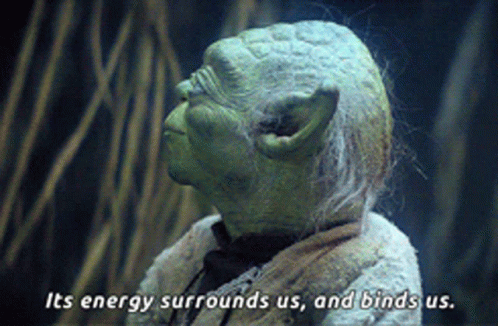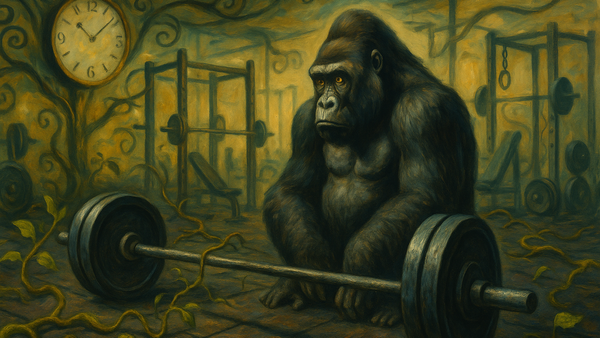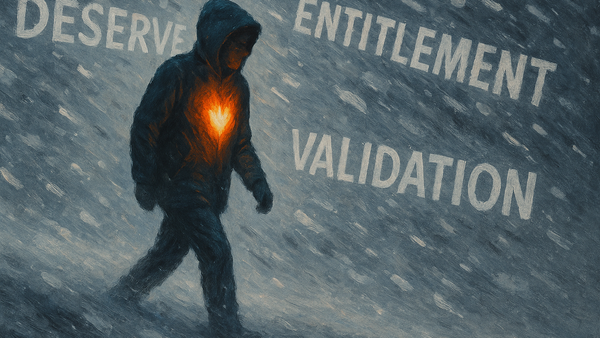Reunite Mind and Body and Break Your Chains of Slavery
We live in a world of complex interdependent systems, most of which are designed to segregate our minds and bodies in order to exploit us from a state of fear and broken spirit. Learn how to liberate yourself by reuniting your body and mind.

The exploration of interdependencies between the mind and body is one of the most mysterious fields of human scientific endeavor. It’s one of the topics that has been concerning mankind for thousands of years.
A quick search on the internet produces an innumerable amount of philosophical, spiritual, religious, and scientific models that seek to explain something termed the mind-body connection. Contemporary healthcare practices and mainstream science tend to both study and treat the mind and the body as two separate entities. Conventional institutions of education and media advocate this dualism in a similar fashion.
The Fraudulent Segregation of Your Body and Mind
As the whole discussion already suggests, the mainstream distinguishes between mind and body, and separates the two entities, ostensibly in the attempt to understand them. This deludes us from the ever so simple and obvious truth: Mind and body naturally form a union. A complex symbiotic construct with elaborate interdependencies that shall not be separated or divided into contradicting concepts if one desires to keep their sanity.
The bigger part of the humanly constructed world is specifically designed to separate your body from your mind. It is a huge societal fraud that comes under the guise of repetitive quick short-term means of satisfaction and discomfort and is being carefully curated to eventually form patterns of addiction and aversion with just one objective: to hold you in a state of subtle underlying fear, shame and guilt to break your free will and efficiently exploit your time and energy, the very substance that animates your spirit. It is an insidious form of usurpation.
It disturbs your ability to distinguish between real healthy nourishing food and artificial empty substitutes. It numbs your experience of real intimate connection. It leads you to confuse short-term self-destructive behavior with the pursuit of productive and sustainable long-term goals.
Most of the people and institutions maintaining the systems we live in are oblivious to the consequences of their actions as cogs in the machinery. This subtle state of fear, shame, or guilt has become the constant underlying background noise of their lives and the main driver of their actions. Their actions originate mainly from fear, not from love.
If you take a step back, create stillness, and then look closely and pay attention you can see it. In the posture of your tax advisor who’s opted for studies that promised security, working 60 hours per week in an air-conditioned office, financing a big house he effectively never uses, being espoused to a wife he’s barely intimate with, and having an only child that is being bullied in school and he rarely spends time with. In the strenuous but clumsy gesticulating of your colleague at work, occupying the desk directly opposite with the big cookie jar and the generous stash of 1.5-liter coke bottles, whose life seems to be a sheer perpetuity of unpleasant events. And in the eyes of the cashier with the thin hair and chapped hands at your local grocery store—if you happen to catch them—who never speaks and only mutters the final sum payable cash or by card.
This truth of societal systematic exploitation through fear can easily be exposed by contemplating the following simple questions and asking yourself whether your true motivation is passion or unconditional love. Or whether it is some manifestation of fear.
- Why do you do the work you do?
- Why are you with your partner? (see our last issue)
- Why do you live where you live?
- Why do you pursue the hobbies you have?
- Why do you pursue the friendships you have?
- Why do you spend your money the way you do?
- Why do you consume alcohol, cigarettes, sugar, pornography, coffee, junk food, social media, prostitutes, beauty products, TV shows, YouTube, so-called “hard drugs” or anything else you’d personally classify as addictive?
If you discover the motivation of fear through one or more of these questions I invite you to explore how to re-establish unity between your body and your mind by reading the section Reconnect To Your Body.
The aforementioned exploitation can only happen through the segregation of body and mind. A unified body and mind are immune to exploitation since the back and forth of sensory bodily experience and mental interpretation is instantaneous and unfiltered by instances of interposed societal conditioning.
On your pursuit of freedom re-establishing unity of your body and mind - “connecting with your body” - represents the most important process you need to go through besides developing intellectual comprehension and insight. Use both your mind and your body to solve the riddle of life, in unity.
Your Body Speaks the Truth
All conscious and unconscious thought patterns eventually manifest in the body. Your conscious expression - such as through language - is always just a reflection of the conscious aspect of your mind. We don’t consciously express the unconscious aspects of our minds because we’re oblivious to them.
But our bodies do. Our bodies always tell the truth.
Your body expresses when you’re tense, when you’re stressed, or feel unpleasant sensations. Your body expresses when you lie, cheat, or betray. And your body expresses when you are happy, joyful, and open.
Your body always manifests your truth of the present moment - often even stores it if not expressed directly, fully, and unabashedly - no matter if you are fully aware of your truth or not.
Oftentimes, using forms of conscious expression like language does not reflect your truth in totality because you’re oblivious to the unconscious mental interpretation of your bodily experience. Your body on the other hand always speaks the truth since it also manifests the aspect of the unconscious mind. Your physical form embodies both your conscious and your unconscious mental patterns.
If you re-establish unity of the two segregated instances you gain direct access to the wisdom of your body, meaning the subtleties of your bodily sensory experiences as well as the physical manifestation of your unconscious mind. All of a sudden the unconscious becomes conscious through instantaneous mental interpretation of the embodied unconscious aspects of your mind.
Reconnect to Your Body
To heal the friction and segregation and to reunite your body and mind you need to practice two things:
- The act of creating space for the physical sensory and emotional patterns to be expressed and experienced without mental distraction for them to dissolve
- Equanimity regarding the quality of your ever-changing physical sensory experience
There is a plethora of practices that help you to reconnect to your body, to reintegrate your body and mind, all of which represent lifestyle choices. That means there’s no one-time pill you can swallow or a weekend treatment you can book. This process of integration is a continuous practice and path you must go alone.
Here’s a compiled list of proven practices that tackle the integration of mind and body from different angles. Due to our very individual life experiences and conditioning, you will find that one practice serves you more than the other. Try for yourself and find what works for you. Scroll down to learn about my recommended methods.
- Meditation - Exercise that comes in many different forms and concepts to raise conscious awareness and disciplines the mind to create the ability to use it more intentionally. Most meditation practices generally aim at cultivating unconditional love and kindness for yourself and others, as well as compassion, joy, and equanimity.
- Mindfulness-Based Cognitive Therapy (MBCT) - A form of psychotherapy that incorporates mindfulness practices like present moment awareness, meditation, breathing, and body scan exercises.
- Hypnotherapy - Practice to adapt a bodily relaxed state for the subconscious mind to be able to more readily accept suggestions to change involuntary responses.
- Body Psychotherapy - A branch of psychotherapy that incorporates touch, breathing, and movement techniques to address a wide range of mental and physical health conditions.
- Somatic Experiencing (SE) - Practice to bringing awareness to physical sensations and reactions associated with traumatic experiences to integrate unconscious memories.
- Tension And Trauma Releasing Exercises (TRE) - Practice to evoke natural tremor responses in the body to release tension associated with stress or trauma.
- Yoga - Discipline that comes in many flavors and facets aiming to integrate body, mind, and spirit through physical movement, breathing techniques, and meditation. My favorites are Hot (Bikram) and Yin Yoga.
- Dance Movement Therapy (DMT) - Practice to create awareness for behavior patterns through exploration of sensations, emotions, and mental patterns emerging from the movement. An alternative would be Ecstatic Dance (see my past issue).
- Progressive Muscle Relaxation (PMR) - Practice of gradual contraction and relaxation of muscle groups to reduce physical tension and anxiety levels.
- Intentional Breathing - Practice to increase pulmonary capacity, create awareness for the parasympathetic and sympathetic nervous system, and train intentional breath regulation.
- Qigong and Tai Chi - Practices that focus on the cultivation and enhancement of qi, the psychophysical energies that permeate the universe (life energy).

My recommended way of practice is Vipassana meditation. It provides the quickest and most direct way to bring mind and body into frictionless symbiosis. You can book your 10-day course here to study the technique and develop a consistent daily routine. Facilities are located around the globe. It’s free of charge including food and accommodation, you may donate as you please after the conclusion of the course. Your only investment is time and energy.
This practice should be combined with a bodily practice of meditative movement. The best concept for my taste is Yoga because it is highly functional and includes both strengthening and stretching of all major muscle groups as well as treatment for joints and tissues, incorporating sitting, standing, and lying positions with breathing and meditation techniques.
That being said, one can find meditative depth to unify the mind and body in all kinds of bodily exercises or sports like rock climbing or tennis, some of them more or less effective for the cause.
The single most important criteria for your choosing is that you find consistency and peace in your practice.
Did you enjoy this article? Please consider contributing to this publication’s financial freedom.
Flows straight into content, not coffee.




